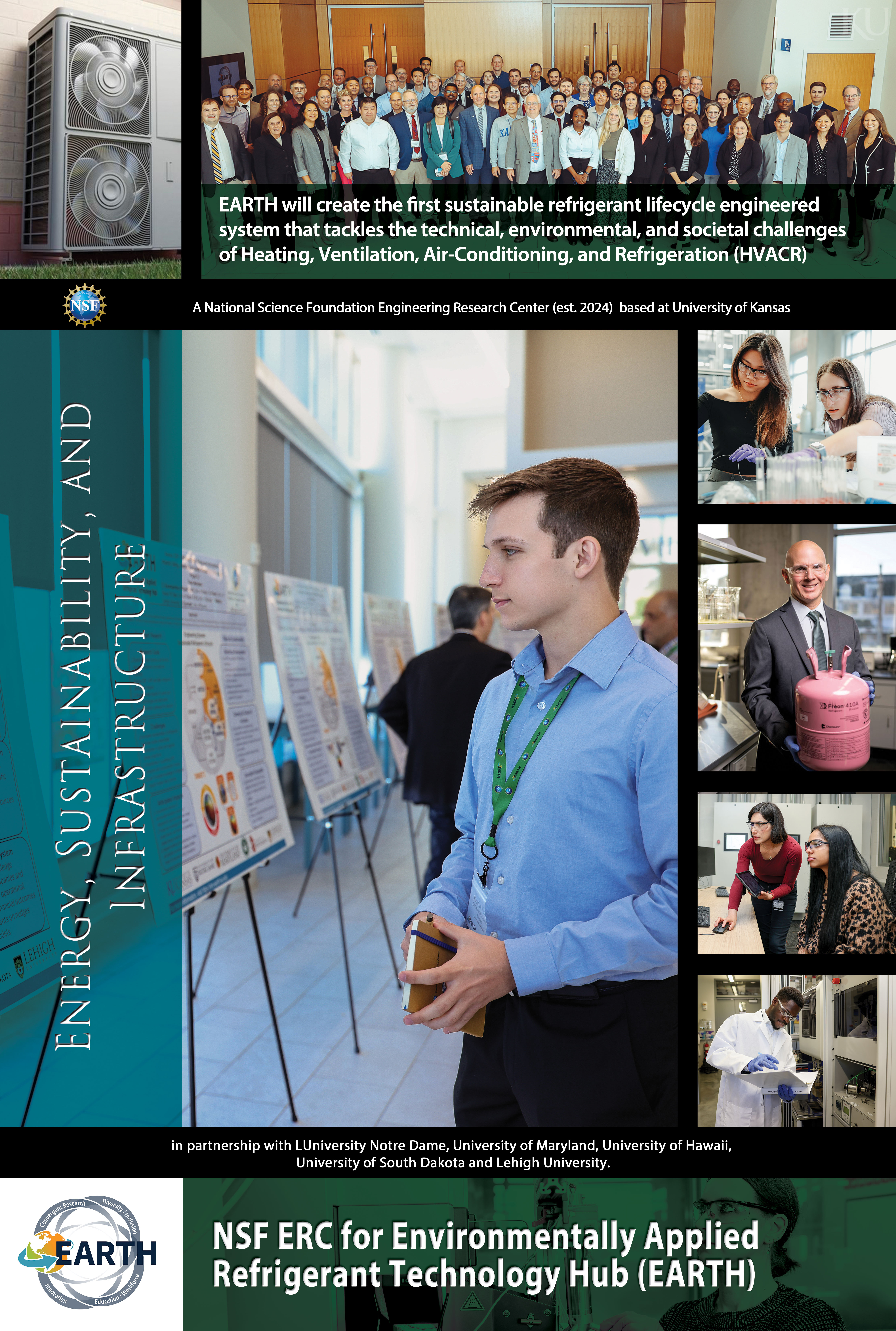Center for Environmentally Applied Refrigerant Technology Hub

The EARTH Engineering Research Center will use a team-science approach to bring together talent in engineering (chemical, environmental, mechanical, and materials), architecture, business, chemistry, economics, geography, history, law, psychology, and entrepreneurship in one Innovation Ecosystem to co-create convergent technical and societal solutions with industry partners, technical and community colleges, professional organizations, regulators, and end users. EARTH's vision is to create a transformative "sustainable refrigerant lifecycle" to address the heating, ventilation, air conditioning, and refrigeration (HVACR) ecosystem's key technical and societal challenges: (1) lowering hydrofluorocarbon (HFC) emissions, (2) creating safe, property-balanced replacement refrigerants, and (3) increasing HVACR energy efficiency.
Energy and Sustainability
Energy, Sustainability, and Infrastructure
Location
Lead Institution
Start Year
Website
Fact Sheet
Core Partners
Center News and Achievements
Locations
Additional Information
Focus
EARTH will create a transformative, sustainable refrigerant lifecycle to reduce global warming from refrigerants while increasing the energy efficiency of heating, ventilation, and cooling.
Graduation Date
Education Web Page
Research Opportunities for Undergrads
Student Leadership Council
Center for Environmentally Applied Refrigerant Technology Hub

The EARTH Engineering Research Center will use a team-science approach to bring together talent in engineering (chemical, environmental, mechanical, and materials), architecture, business, chemistry, economics, geography, history, law, psychology, and entrepreneurship in one Innovation Ecosystem to co-create convergent technical and societal solutions with industry partners, technical and community colleges, professional organizations, regulators, and end users. EARTH's vision is to create a transformative "sustainable refrigerant lifecycle" to address the heating, ventilation, air conditioning, and refrigeration (HVACR) ecosystem's key technical and societal challenges: (1) lowering hydrofluorocarbon (HFC) emissions, (2) creating safe, property-balanced replacement refrigerants, and (3) increasing HVACR energy efficiency.
|
LocationLawrence, KS
|
Lead InstitutionThe University of Kansas
|
Start Year |
Website |
Fact Sheet |
Core PartnersLehigh University
University of Hawaii
University of Maryland
University of Notre Dame
University of South Dakota
|
FocusEARTH will create a transformative, sustainable refrigerant lifecycle to reduce global warming from refrigerants while increasing the energy efficiency of heating, ventilation, and cooling. |
Graduation Date |
Education Web Page |
Research Opportunities for Undergrads |
Student Leadership Council |
Center News and Achievements
Locations
Center for Environmentally Applied Refrigerant Technology Hub

The EARTH Engineering Research Center will use a team-science approach to bring together talent in engineering (chemical, environmental, mechanical, and materials), architecture, business, chemistry, economics, geography, history, law, psychology, and entrepreneurship in one Innovation Ecosystem to co-create convergent technical and societal solutions with industry partners, technical and community colleges, professional organizations, regulators, and end users. EARTH's vision is to create a transformative "sustainable refrigerant lifecycle" to address the heating, ventilation, air conditioning, and refrigeration (HVACR) ecosystem's key technical and societal challenges: (1) lowering hydrofluorocarbon (HFC) emissions, (2) creating safe, property-balanced replacement refrigerants, and (3) increasing HVACR energy efficiency.
Energy and Sustainability
Energy, Sustainability, and Infrastructure
Location
Lead Institution
Start Year
Website
Fact Sheet
Core Partners
Center News and Achievements
Additional Information
Focus
EARTH will create a transformative, sustainable refrigerant lifecycle to reduce global warming from refrigerants while increasing the energy efficiency of heating, ventilation, and cooling.
